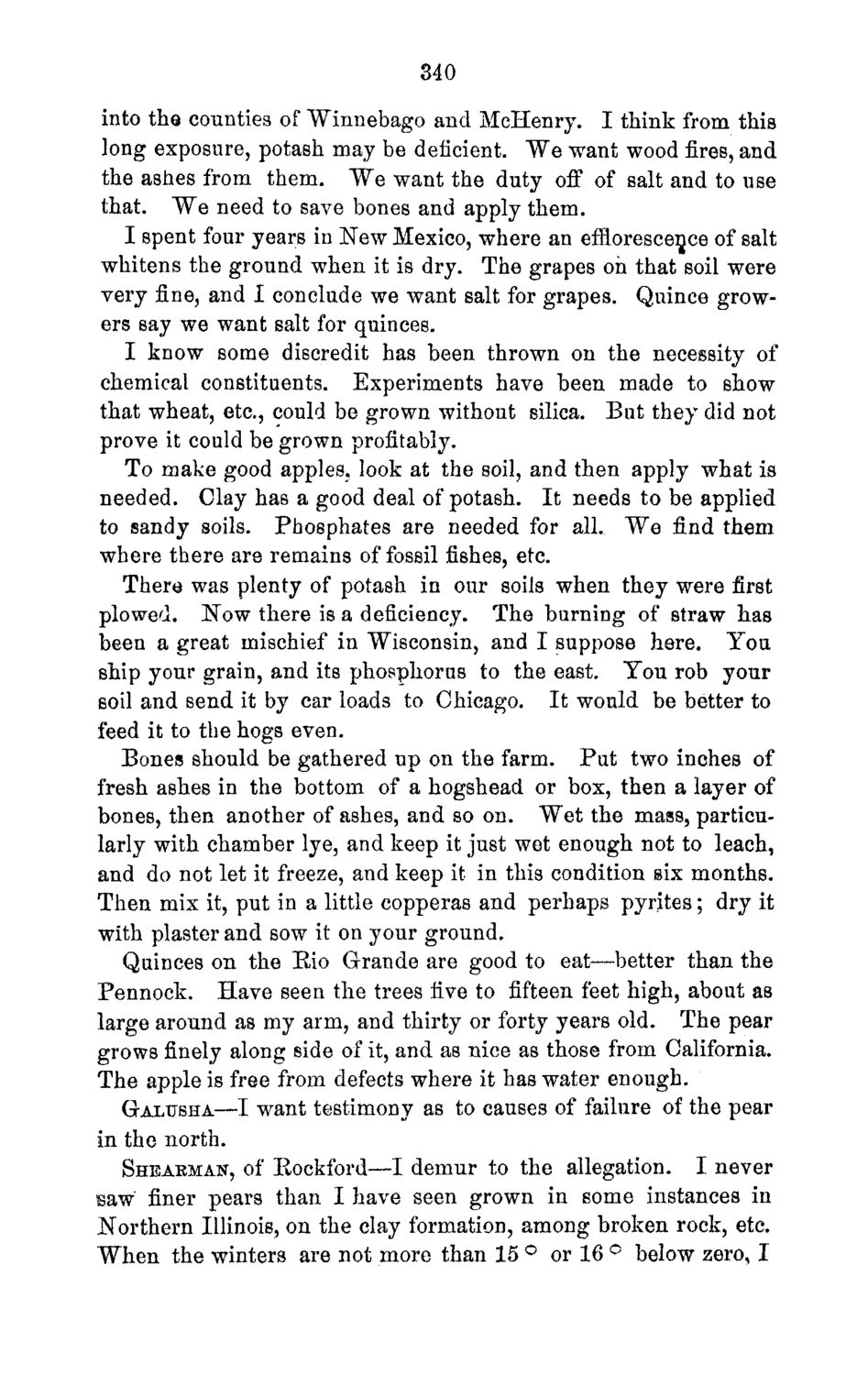| |
| |
Caption: Board of Trustees Minutes - 1870
This is a reduced-resolution page image for fast online browsing.

EXTRACTED TEXT FROM PAGE:
340 into the counties of Winnebago and McHenry. I think from this long exposure, potash may be deficient. We want wood fires, and the ashes from them. We want the duty off of salt and to use that. W e need to save bones and apply them. I spent four years in New Mexico, where an efflorescence of salt whitens the ground when it is dry. The grapes oh that soil were very fine, and I conclude we want salt for grapes. Quince growers say we want salt for quinces. I know some discredit has been thrown on the necessity of chemical constituents. Experiments have been made to show that wheat, etc., could be grown without silica. But they did not prove it could be grown profitably. To make good apples, look at the soil, and then apply what is needed. Clay has a good deal of potash. It needs to be applied to sandy soils. Phosphates are needed for all. W e find them where there are remains of fossil fishes, etc. There was plenty of potash in our soils when they were first plowed. Now there is a deficiency. The burning of straw has been a great mischief in Wisconsin, and I suppose here. You ship your grain, and its phosphorus to the east. Tou rob your soil and send it by car loads to Chicago. It would be better to feed it to the hogs even. Bones should be gathered up on the farm. Put two inches of fresh ashes in the bottom of a hogshead or box, then a layer of bones, then another of ashes, and so on. Wet the mass, particularly with chamber lye, and keep it just wet enough not to leach, and do not let it freeze, and keep it in this condition six months. Then mix it, put in a little copperas and perhaps pyrites; dry it with plaster and sow it on your ground. Quinces on the Rio Grande are good to eat—better than the Pennock. Have seen the trees five to fifteen feet high, about as large around as my arm, and thirty or forty years old. The pear grows finely along side of it, and as nice as those from California. The apple is free from defects where it has water enough. GTALTJSHA—I want testimony as to causes of failure of the pear in the north. SHEARMAN, of Rockford—I demur to the allegation. I never saw finer pears than I have seen grown in some instances in Northern Illinois, on the clay formation, among broken rock, etc. When the winters are not more than 15 ° or 16 ° below zero, I
| |